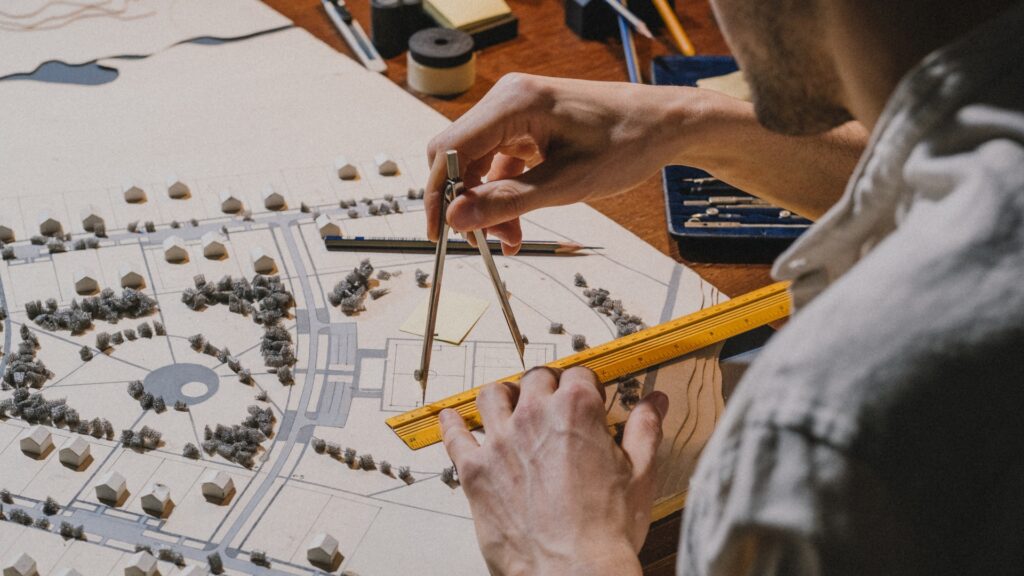The world of design, engineering, and construction continues to evolve—and at the centre of it all is a highly skilled professional known as the draughtsman. Whether you’re visualising complex structures or preparing technical drawings that serve as the foundation for multimillion-pound projects, this role is both rewarding and in high demand.
In this in-depth guide, we’ll explore everything you need to know about pursuing a career as a draughtsman, how tools like AutoCAD are essential, and the vital links between building surveying and construction management. We’ll also unpack qualifications, earning potential, and professional development routes that can launch or elevate your journey in this field.

Understanding the Role of a Draughtsman
A draughtsman (also called a draftsperson or CAD technician) is responsible for creating precise technical drawings used in construction, engineering, architecture, and manufacturing. These drawings act as visual instructions for projects and are critical to ensuring that buildings and products are built accurately.
This career blends technical knowledge, attention to detail, and creativity. With computer-aided design software like AutoCAD, draughtsmen produce 2D and 3D models that guide architects, engineers, and contractors during every stage of a build or production process.
There are several types of draughtsmen depending on the industry:
- Architectural draughtsman – Focuses on building layouts, floor plans, and design features
- Mechanical draughtsman – Creates drawings of machinery, tools, and parts
- Civil draughtsman – Works on public infrastructure such as roads, bridges, and utilities
- Structural draughtsman – Collaborates with engineers to draw steel frameworks and load-bearing elements
Why AutoCAD is Essential for a Draughtsman
Modern draughtsmen rely on AutoCAD, the industry-leading software for computer-aided design. Developed by Autodesk, AutoCAD allows for the creation of high-precision digital drawings that are easy to modify, store, and share across teams.
AutoCAD features include:
- Layering tools to organise project elements
- 2D drafting and annotation for clear plan production
- 3D modelling capabilities to bring structures to life
- Dynamic blocks and reusable components to improve workflow
- File compatibility for cross-discipline collaboration
Knowing how to use AutoCAD proficiently is not just an advantage—it’s a requirement for most draughtsman roles. Employers frequently look for AutoCAD certifications or hands-on experience when assessing candidates.
How Draughtsmanship Intersects with Building Surveying
Building surveying is a profession that deals with the inspection, assessment, and maintenance of buildings. Surveyors often rely on the technical drawings and schematics created by draughtsmen to assess structural integrity, identify defects, or propose renovations.
Draughtsmen may work alongside surveyors to:
- Draw up detailed site plans and elevations
- Assist in refurbishment proposals
- Create drawings for building regulation submissions
- Visualise survey data with CAD tools
If you’re a draughtsman looking to expand your expertise, knowledge of building surveying principles can help diversify your skillset and open doors to hybrid roles or consulting work. It’s a common career step for CAD technicians who want to gain a deeper understanding of how buildings function beyond the design phase.
Links Between Draughtsmanship and Construction Management
Construction management is the strategic side of building development. It involves planning, coordinating, and supervising construction projects from start to finish.
Though construction managers are not typically the ones creating technical drawings, they depend heavily on the draughtsman’s output to make critical decisions about budgeting, timelines, and resources.
A draughtsman with knowledge of construction processes can:
- Provide more practical, buildable design solutions
- Communicate effectively with on-site teams and contractors
- Understand timelines and material limitations
- Prepare technical documentation aligned with project goals
Many professionals begin their careers in draughtsmanship and transition into construction management as they build project experience and leadership skills. Combining technical drawing expertise with managerial training makes for a powerful combination in today’s competitive construction sector.
Qualifications Needed to Become a Draughtsman
The educational path for a draughtsman varies depending on the sector, but there are several standard routes you can take in the UK and beyond.
Academic Pathways
- GCSEs (or equivalent) – Focus on Maths, Design and Technology, ICT
- Level 3 Diploma or Extended Diploma – In Engineering, Architecture or Construction
- HNC/HND (Higher National Certificate/Diploma) – Often in Building Studies, Civil Engineering or Product Design
- Foundation Degree or Bachelor’s Degree – Optional, but useful for progressing to higher-level design or surveying roles
Technical Certifications
- AutoCAD Certifications – Offered by Autodesk, highly valued by employers
- NVQ or SVQ in CAD – Work-based qualifications recognised in construction and manufacturing
- City & Guilds CAD Courses – Structured training for beginners through to advanced professionals
Apprenticeships are also a popular route, allowing you to earn while learning hands-on with a qualified mentor.
Essential Skills for Aspiring Draughtsmen
While technical training is crucial, soft skills and specific attributes make a draughtsman stand out in the workplace:
- Excellent spatial awareness
- Strong maths and geometry knowledge
- Problem-solving skills
- Attention to detail
- Ability to read and interpret design briefs
- Collaboration and communication
- Understanding of construction and engineering principles
Familiarity with BIM (Building Information Modelling), structural standards, and materials is also advantageous, especially if you work closely with building surveyors or engineers.
Career Roadmap for Draughtsmen
The career journey typically starts at entry-level positions, such as Junior CAD Technician or Trainee Draughtsman. With experience and continued education, many professionals advance to roles such as:
- Senior Draughtsman
- CAD Manager
- Design Engineer
- Building Surveyor
- Project Coordinator
- Construction Manager
- Architectural Technologist
Each of these roles requires a growing level of responsibility, from supervising teams to managing projects and liaising directly with clients.
Over time, some draughtsmen specialise in specific software (e.g., AutoCAD Civil 3D, Revit, or SolidWorks), while others move into consulting or start their own design businesses.
Expected Salaries and Earning Potential
Salaries vary depending on industry, location, and experience. Here’s a general overview of expected UK earnings as of 2025:
| Role | Average Annual Salary |
|---|---|
| Junior Draughtsman | £22,000 – £28,000 |
| Mid-Level CAD Technician | £30,000 – £38,000 |
| Senior Draughtsman | £40,000 – £50,000 |
| Building Surveyor | £45,000 – £60,000 |
| Construction Manager | £55,000 – £75,000+ |
Freelance and contract draughtsmen may command higher hourly rates, particularly if they are skilled in niche areas or can offer quick turnaround on urgent projects.

How to Get Started in a Draughtsman Career
If you’re considering this career path, here are practical steps to begin:
- Learn the Basics of AutoCAD – Start with free tutorials, then move into formal training
- Build a Portfolio – Include design samples, practice projects, and any coursework
- Apply for Apprenticeships or Entry-Level Jobs – Focus on roles in architecture, construction, or engineering
- Pursue Continuous Learning – Stay current with new software versions and industry standards
- Network with Professionals – Join design and construction groups online or in your local area
Gaining work experience early is key. Even a short internship or volunteer role with a construction firm can provide insight and open the door to future employment.
Final Thoughts
Becoming a draughtsman is more than just learning how to draw—it’s about mastering the art of turning ideas into reality through precision, planning, and digital skill. With AutoCAD and other tools, draughtsmen support critical projects across construction management, building surveying, and architectural design.
This career offers not only a solid income but also the opportunity to work on projects that shape the world we live in. Whether you’re just starting out or looking to level up your design career, draughtsmanship is a dynamic and rewarding path filled with opportunity.

